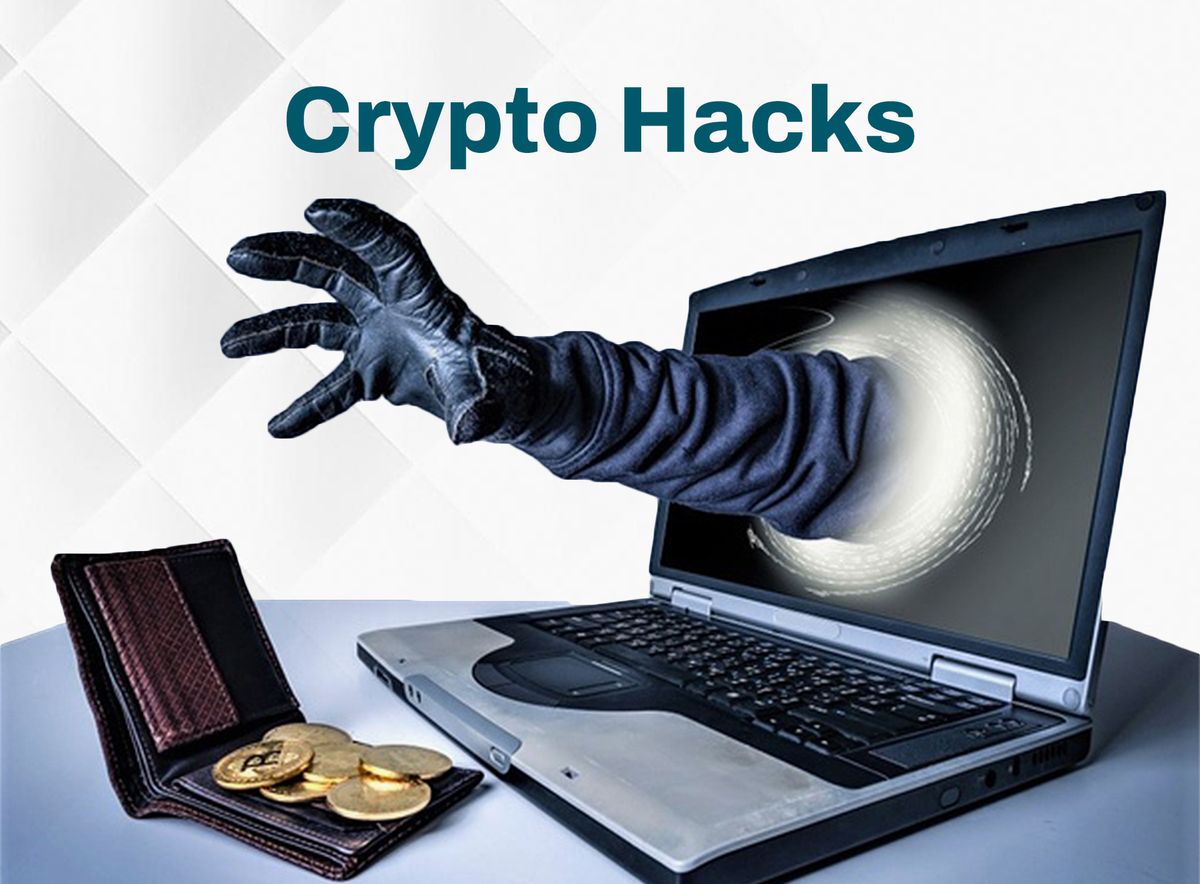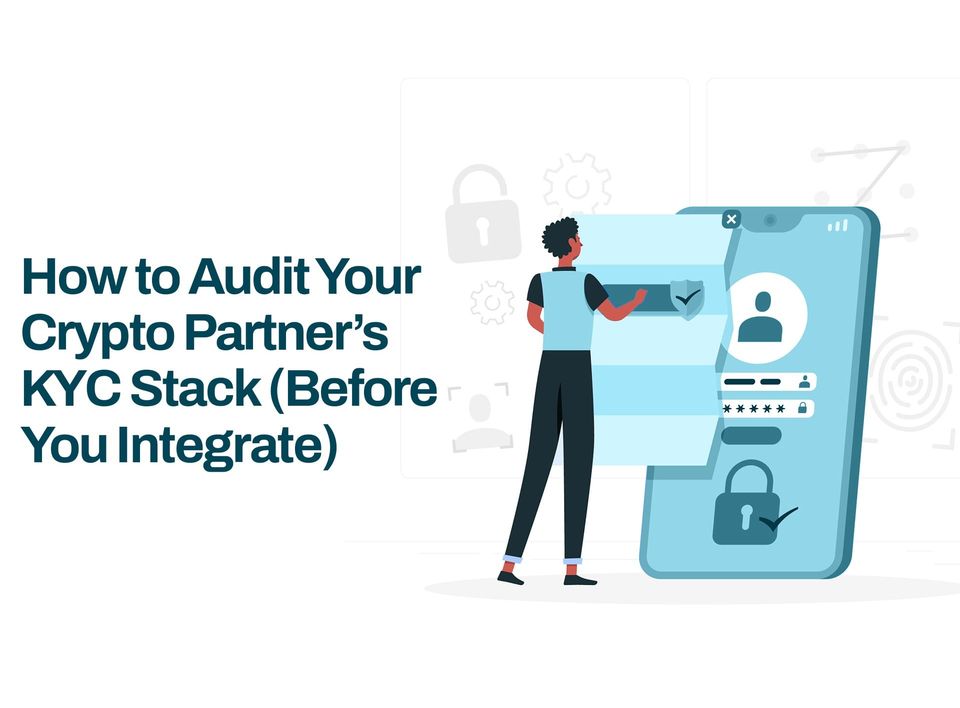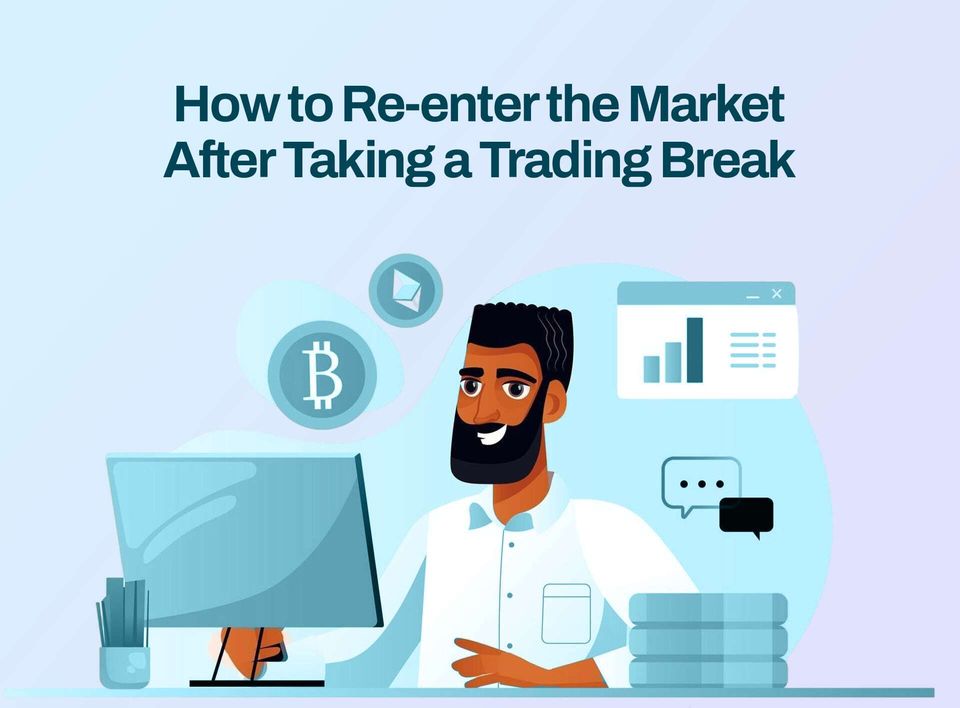Crypto Hacks: Lessons from Major Security Breaches
Crypto hacks are unauthorized security breaches on cryptocurrency platforms or wallets that lead to the theft of digital assets.

TABLE OF CONTENTS:
1. Introduction
2. What are Crypto Hacks?
3. Notable Crypto Hacks
4. How Do Crypto Hacks Happen?
5. Impacts of Crypto Hacks
6. Preventive Measures Against Crypto Hacks
7. Closing Thoughts
8. FAQs
In one of our recent articles, we talked about 2 major fears that every crypto trader has. In this article, we will be talking about another major fear every crypto trader experiences. Well, more like a major dread because this is a situation that can put every member of the crypto community on their toes and their hearts in their mouths. Including the founders of crypto exchanges.
If crypto exchange founders and crypto traders, both beginners and experienced, were to have a common nightmare, it would be crypto hacks. Have you ever experienced a hack on your social media account? Take that feeling of panic you had, intensify it a number of times, and throw in a bit of a heart attack in there, especially if it leads to losses; then you will get a glimpse of what it feels like for your crypto account to be hacked and your digital assets stolen.
Sadly, as the crypto ecosystem continues to evolve, so do the cybercrimes against it. I mean, there is no sugar without ants, but we can always shield the sugar from the ants by placing them in an airtight container, right? That is what this article will inform you about. Protecting your sugar (crypto) from ants (cyber hacks and cybercriminals), using lessons learned from major security breaches in crypto.
But let’s discuss what crypto hacks really are and the forms they take before getting to that bit.
hat are Crypto Hacks?
Crypto hacks refer to unauthorised access or breaches in the security systems of cryptocurrency platforms or wallets, resulting in the theft of digital assets. These breaches can occur through various means, each posing significant risks to users' funds and the overall trust in the cryptocurrency ecosystem.
One common type of crypto hack involves phishing attacks, where malicious actors create fake websites or emails that mimic legitimate cryptocurrency platforms to trick users into disclosing their private keys or login credentials. For instance, users might receive an email seemingly from a popular exchange prompting them to log in, but the website is a replica designed to steal their information.
Another common method is through malware, which infects users' devices and monitors their activities to steal sensitive information such as private keys or wallet passwords. Malware can be unknowingly downloaded through malicious links, attachments, or even compromised software installations.
Additionally, exchange hacks are significant threats where cybercriminals exploit vulnerabilities in trading platforms to gain unauthorised access to users' funds. These breaches often result in substantial financial losses for both the exchange and its users. Notable examples include the Mt. Gox hack in 2014, where approximately 850,000 bitcoins were stolen, and the more recent Binance hack in 2019, which resulted in the loss of over $40 million worth of cryptocurrency.
Furthermore, ransomware attacks have emerged as a growing concern, where hackers encrypt users' files or devices and demand cryptocurrency payments for their release. These attacks not only disrupt users' access to their assets but also underscore the importance of strong cybersecurity measures in safeguarding against such threats.
Notable Crypto Hacks
1. Mt. Gox:
Back in 2014, Mt. Gox, a once-dominant Bitcoin exchange, faced a catastrophic meltdown. Imagine a virtual bank suddenly losing access to its vault, and customers realising their hard-earned digital coins were missing. Mt. Gox reported a mind-boggling loss of approximately 850,000 Bitcoins, valued at around $450 million at the time. This massive breach not only shook the cryptocurrency world but also highlighted the vulnerabilities in early crypto exchanges. Investigations revealed flaws in security practices, leading to the eventual demise of Mt. Gox and a painful lesson for the entire industry.
2. Bitfinex:
In 2016, Bitfinex, a popular cryptocurrency exchange, fell victim to a significant security breach. The hackers made off with approximately 120,000 Bitcoins, worth about $72 million. This incident exposed weaknesses in Bitfinex's security infrastructure, causing panic among traders. The aftermath involved Bitfinex spreading the losses across all users, illustrating the interconnected nature of the crypto space. The Bitfinex hack reinforced the urgent need for strong security measures within cryptocurrency exchanges to protect user funds.
3. Coincheck:
In 2018, Coincheck, a Japanese cryptocurrency exchange, experienced a jaw-dropping hack, referred to as the biggest hack in cryptocurrency history, that resulted in the loss of 523 million NEM tokens, equivalent to nearly $530 million. The hackers exploited vulnerabilities in Coincheck's security, leaving a lasting impact on the exchange and prompting regulatory interventions in Japan. This breach emphasised the importance of regulatory oversight and pushed industry players to enhance security protocols to safeguard against such massive losses.
4. Binance:
Binance, one of the world's largest cryptocurrency exchanges, faced a hacking attempt in 2019. Fortunately, the exchange demonstrated resilience and managed to thwart the attack before any significant damage occurred. Binance's proactive security measures, quick response, and use of Secure Asset Funds for Users (SAFU) to cover losses showcased the evolving strategies within the industry to protect user funds. The attempted breach on Binance highlighted the ongoing arms race between exchanges and hackers, emphasising the need for constant vigilance and improvement in cybersecurity practices.
How Do Crypto Hacks Happen?
Let's look at the four main ways crypto hacks happen:
1. Phishing Attacks:
Let’s look at an instance. Imagine receiving an email claiming to be from your crypto exchange, urgently requesting your login details. This is a classic phishing attack. These deceptive messages often lead users to fake websites that mimic legitimate platforms, tricking them into revealing sensitive information.
According to industry reports, an estimated 3.4 billion emails a day are sent by cybercriminals, designed to look like they come from trusted senders. This is over a trillion phishing emails per year.
It's essential to stay vigilant and double-check the authenticity of communication to avoid falling prey to these cunning schemes.
2. Malware:
Malicious software, or malware, can sneak into your computer and compromise your cryptocurrency holdings. It can happen when you download a seemingly harmless file that, unknowingly to you, contains malware designed to steal your private keys or login credentials. These attacks often result in significant financial losses.
According to Astra, there are now over 1 billion malware programs in existence and every day, 560,000 new pieces of malware are detected.
Regularly updating your antivirus software and being cautious about downloading files are practical steps to prevent malware from infiltrating your system.
3. Insider Threats:
Sometimes, the danger comes from within. Insider threats involve individuals with authorised access misusing their privileges for personal gain or malicious purposes.
For instance, an employee with access to sensitive information can exploit it for financial advantage. While insider threats may not be as frequent as other types of attacks, they can have severe consequences.
According to SoftActivity, insider threats affect over 34% of businesses globally every year, and they have increased by 47% over the last two years. Establishing strong internal controls and regularly reviewing access permissions can help mitigate these risks.
4. Software Vulnerabilities:
Software is not flawless, and crypto platforms are no exception. Vulnerabilities in the code can be exploited by hackers to gain unauthorised access or disrupt operations.
A real-world example is the 2021 attack on decentralised finance (DeFi) protocol due to a software vulnerability, resulting in a loss of millions. It is crucial for crypto developers to prioritise security audits and promptly address any identified vulnerabilities through updates.
As an investor, choosing platforms with a strong security track record is a smart move to reduce exposure to such risks.
Impacts of Crypto Hacks
1. Loss of Funds:
One of the immediate and direct impacts of crypto hacks is the loss of funds. When hackers successfully infiltrate a cryptocurrency exchange or wallet, they can siphon off digital assets, leaving users with empty pockets. Consider the infamous Mt. Gox hack in 2014, where around 850,000 Bitcoins were stolen, leading to substantial financial losses for the affected users.
2. Weakening Trust in the System:
Crypto hacks weaken trust in the entire cryptocurrency ecosystem. Just like a bank robbery makes people wary of banks, major crypto breaches make users sceptical about the safety of digital assets. This lack of trust can hinder the widespread adoption of cryptocurrencies, preventing them from becoming mainstream.
3. Regulatory Scrutiny:
Cryptocurrency markets often face increased regulatory scrutiny following significant hacks. Governments and financial authorities step in to assess the situation and may impose stricter regulations to prevent future breaches. This can impact the overall flexibility and anonymity that many cryptocurrency enthusiasts value.
4. Market Instability:
Crypto hacks can lead to heightened market instability. The abrupt loss of funds, coupled with the uncertainty surrounding the security of digital assets, can trigger panic selling. Prices may plummet as a result, affecting the entire cryptocurrency market. The 2018 Coincheck hack, where approximately $530 million worth of NEM coins were stolen, exemplifies the market turbulence that follows such incidents.
5. Development of Security Measures:
While hacks are detrimental, they often drive improvements in security measures. Exchanges and wallet providers learn from these breaches, investing in advanced technologies and protocols to better protect user funds. The continuous evolution of security in the crypto space is a direct response to the ongoing threats posed by hackers.
6. Psychological Impact on Investors:
Crypto hacks have a lasting psychological impact on investors. The fear of losing funds due to a security breach can discourage potential investors from entering the market. Overcoming this psychological barrier is crucial for the widespread acceptance and adoption of cryptocurrencies.
7. Rise of Insurance Solutions:
As a response to the increasing frequency of hacks, the crypto industry has seen the rise of insurance solutions. Some exchanges now offer insurance coverage to protect users against losses resulting from security breaches. This trend aims to provide investors with an additional layer of confidence in the safety of their digital assets.
Preventive Measures Against Crypto Hacks
1. Secure Password Practices:
Simple and easily guessable passwords are a hacker's delight. To fortify your defense, use complex passwords comprising a mix of uppercase and lowercase letters, numbers, and symbols. Avoid using easily accessible personal information like birthdays or names. For example, instead of "password123," opt for something like "Bumblebee$42Sunset." Regularly update your passwords and consider using a reliable password manager to keep track securely.
2. Two-Factor Authentication (2FA):
By enabling 2FA, even if someone manages to get hold of your password, they would still need an additional code, typically sent to your mobile device, to access your account. It adds an extra layer of protection, making it significantly harder for unauthorized individuals to breach your account.
3. Be Wary of Phishing Attempts:
Phishing is like a digital trap set by cybercriminals. They might send emails or messages posing as legitimate entities, tricking you into revealing sensitive information. Always double-check the sender's email address, don't click on suspicious links, and verify the legitimacy of communication before sharing any details.
4. Regular System Updates:
Just like your phone or computer needs regular updates, so does your crypto wallet or exchange platform. Developers often release updates with enhanced security features to combat emerging threats. Make sure to stay up-to-date with the latest versions of your crypto-related applications to benefit from these security patches.
5. Cold Wallets for Long-Term Storage:
Imagine your crypto as money in a physical safe. Cold wallets are like that safe, disconnected from the internet when not in use. For long-term storage of your digital assets, consider using hardware wallets or paper wallets. These are less vulnerable to online threats as they are offline most of the time, ensuring an added layer of security.
6. Regularly Monitor Your Accounts:
Stay vigilant by frequently checking your crypto accounts for any unauthorised activities. Set up notifications for account logins, transactions, or withdrawals. If you notice anything suspicious, act promptly to secure your assets. Timely awareness can often prevent potential threats from escalating.
7. Secure Your Private Keys:
Private keys are the keys to your crypto kingdom. Keep them secure offline, like you'd keep your treasures locked in a safe. Avoid sharing them, and consider hardware wallets for added protection.
8. Diversify Your Investments:
Diversification can minimise risks. If one asset faces a breach, your entire portfolio won't be at stake.
9. Insurance:
Just as you insure your home or car, consider crypto insurance. It adds an extra layer of protection in case the unexpected occurs.
10. Stay Informed:
The crypto landscape evolves quickly. Stay updated on security practices, new threats, and market trends.
Closing Thoughts
Safeguarding your cryptocurrency holdings against potential hacks requires diligence, awareness, and proactive measures.
By understanding the various methods employed by cybercriminals, such as phishing attacks, malware infiltration, insider threats, and exploiting software vulnerabilities, you can better protect your digital assets.
Implementing preventive measures like secure password practices, two-factor authentication, regular system updates, and cold wallets for long-term storage significantly reduces the risk of unauthorised access and financial loss.
Additionally, staying informed about evolving security practices, market trends, and potential threats empowers you to make informed decisions and navigate the crypto landscape with confidence. Stay vigilant, stay informed, and stay secure.
FAQs
Q1. Can my digital wallet be hacked?
A1. While not impossible, using secure practices like hardware wallets and two-factor authentication minimises the risk.
Q2. Are all cryptocurrencies equally vulnerable?
A2. No, vulnerabilities vary. Diversifying your investments can help reduce risks.
Q3. Why do centralised exchanges get hacked more often?
A3. Centralised exchanges are single points of failure. Decentralised exchanges or using hardware wallets can enhance security.
Q4. Is it safe to store my crypto on an exchange?
A4. Exchanges can be vulnerable. Consider transferring your holdings to a secure hardware wallet.
Q5. What is two-factor authentication, and why is it important?
A5. Two-factor authentication adds an extra layer of security by requiring a second verification step, usually a code from your phone.
Q6. Can a crypto hack be traced?
A6. Blockchain's transparent nature allows tracing, but recovery is challenging. Prevention is key.
Q7. Are smart contracts safe?
A7. Smart contracts require thorough auditing to avoid vulnerabilities. Always use well-audited contracts.
Q8. How often should I update my crypto software?
A8. Regular updates are crucial. Check for updates and security patches periodically.
Q9. What is the safest way to store my private keys?
A9. Hardware wallets offer the highest level of security for storing private keys.
Q10. Can I recover stolen cryptocurrencies?
A10. Recovering stolen crypto is challenging. Prevention and security measures are the best defense.
Disclaimer: This article was written to provide guidance and understanding. It is not an exhaustive article and should not be taken as financial advice. Obiex will not be held liable for your investment decisions.




